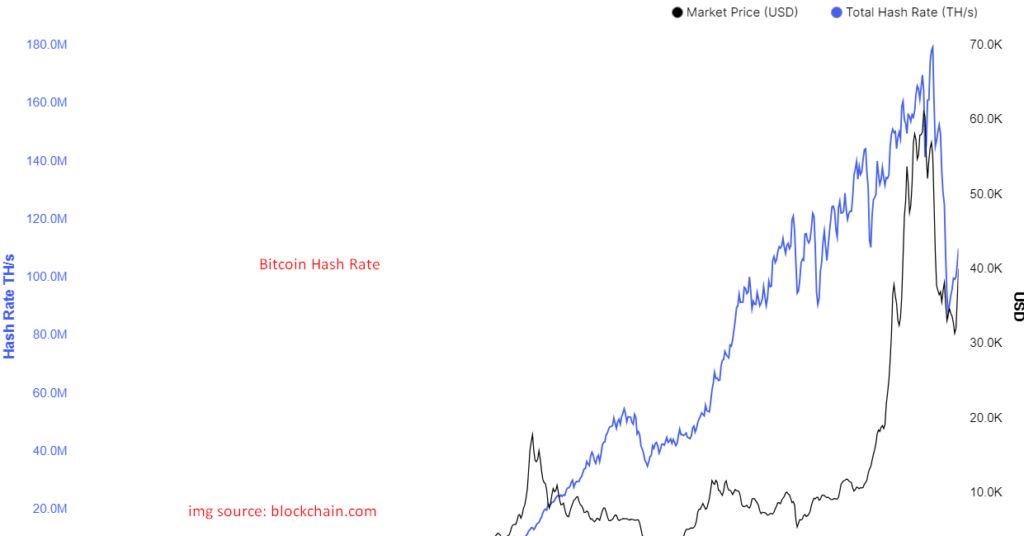In the world of cryptocurrencies, Bitcoin has emerged as a revolutionary digital asset that has captured the attention of investors, tech enthusiasts, and the general public alike. At the heart of the Bitcoin network’s functionality lies the concept of hashrate, a crucial metric that ensures the security and integrity of the entire blockchain. In this blog post, we will delve into the intricacies of Bitcoin hashrate, exploring what it is, how it works, and why it is vital for the network’s operation.
What is Bitcoin Hashrate?

Bitcoin hashrate can be defined as the computational power dedicated to mining or securing the Bitcoin network. It quantifies the speed at which miners collectively solve complex mathematical puzzles to validate and add new transactions to the blockchain. In simple terms, hashrate measures the number of hash operations a miner can perform per second.
Proof of Work and Hashing
To understand hashrate, it is essential to grasp the concept of Proof of Work (PoW), the consensus mechanism on which Bitcoin operates. PoW involves miners competing to solve a cryptographic puzzle by applying their computational resources, typically specialized hardware called ASICs. These puzzles are designed to be difficult to solve but easy to verify once a solution is found.
A hash, in the context of Bitcoin, refers to a mathematical function that takes an input and produces a fixed-size string of characters. Miners perform numerous calculations per second in an attempt to find a hash that meets certain criteria, usually a hash that starts with a certain number of zeros. This process involves trying different inputs repeatedly until a valid hash is discovered.
The Role of Hashrate
The total hashrate of the Bitcoin network reflects the combined computational power of all the participating miners. As more miners join the network or upgrade their equipment, the total hashrate increases. This heightened hashrate translates into more competition and higher difficulty levels for solving the cryptographic puzzles.
The Bitcoin protocol adjusts the difficulty level approximately every two weeks to maintain an average block time of 10 minutes, regardless of changes in the total hashrate. If the hashrate rises, the difficulty increases to ensure that miners continue to spend approximately the same amount of time to find a solution. Conversely, if the hashrate decreases, the difficulty adjusts downward, making it easier for miners to find a solution.
Security and Network Integrity
A higher hashrate generally indicates a more secure network since it would require a significant amount of computational power to launch a successful attack on the blockchain. To alter past transactions or manipulate the system, an attacker would need to possess more computational power than the rest of the network combined, which becomes increasingly difficult as the hashrate grows.
Furthermore, a higher hashrate makes it harder for an individual miner or group of miners to gain control over the network and potentially manipulate transactions. The decentralized nature of Bitcoin, combined with its high hashrate, ensures that no single entity can dominate the network and compromise its integrity.
Conclusion
Bitcoin hashrate is a fundamental metric that measures the computational power dedicated to securing the Bitcoin network. It plays a vital role in the network’s security, maintaining the integrity of transactions and preventing potential attacks. As more miners contribute their computational resources, the total hashrate increases, resulting in a more robust and resilient blockchain.
Understanding the concept of hashrate empowers individuals to comprehend the importance of network security, appreciate the decentralized nature of Bitcoin, and recognize the efforts undertaken by miners to maintain the reliability of the entire system. With a strong hashrate, Bitcoin continues to revolutionize the financial landscape, offering a secure and transparent platform for peer-to-peer transactions.


